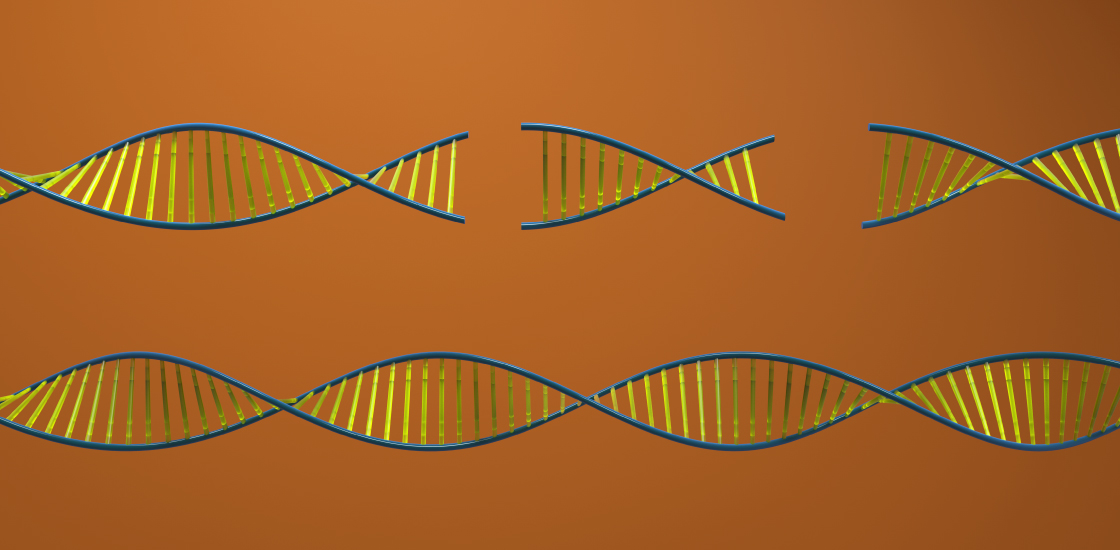Deletion of a region of chromosome 22 leads to widespread changes in the expression of numerous genes associated with autism and schizophrenia, according to a new study of human neurons.
People missing the region, which is called 22q11.2, have an increased likelihood of having any of a number of neuropsychiatric and developmental conditions, including autism, schizophrenia, intellectual disability and epilepsy.
How the deletion contributes to these various conditions has puzzled researchers because studies have so far failed to identify a single gene within the 22q11.2 region that contributes to those conditions, says co-lead researcher Ralda Nehme, associate director of the Stem Cell Program at the Stanley Center for Psychiatric Research at the Broad Institute in Cambridge, Massachusetts.
“People had focused more on the deletion genes in the past,” Nehme says. When she and her colleagues analyzed gene expression levels in neurons derived from people with 22q11.2 deletions, they discovered significant changes in genes strongly linked to autism and schizophrenia elsewhere in the genome.
“It suggests that there is this convergence of mechanisms” between the effects of the deletion and pathways known to contribute to these conditions, says Carrie Bearden, professor of psychiatry and biobehavioral sciences and psychology at the University of California, Los Angeles, who was not involved in the study.
N
ehme and her colleagues generated induced pluripotent stem cells from 19 people who carry a 22q11.2 deletion and 29 people without such deletions. The team compared the cells’ expression levels of genes outside the deletion as they reprogrammed the cells into neural progenitors and mature excitatory neurons.Cells carrying the deletion expressed a different set of genes than did control cells, the team found, but that set changed throughout development. As stem cells and progenitor cells, carriers and non-carriers differed in their expression of 380 genes, 7 of which are linked to autism and developmental delay, such as FOXP2 and PAX5. As excitatory neurons, they varied in their expression of 86 genes, including a statistically significant increase in those associated with schizophrenia.
The team found similar gene expression differences in stem cells, neural progenitors and excitatory neurons derived from human embryonic stem cells compared with those with the same genetic background that had been edited via CRISPR to carry a 22q11.2 deletion.
That finding suggests the deletion itself leads to the differences in gene expression, says Jacob Vorstman, associate professor of psychiatry at the University of Toronto in Canada, who was not involved in the study.
To figure out how the 22q11.2 deletion could shape the expression of other genes, the team mapped the interactions between the proteins encoded by genes that have altered expression in cells carrying the deletion. That network, which links one protein to another via the fewest intermediate proteins possible, also contained many of the proteins encoded by genes within the deleted region, the team found. The results highlight how loss of the 22q11.2 genes could have cascading effects that ultimately result in traits linked to autism or schizophrenia, says co-lead investigator Olli Pietiläinen, group leader at the University of Helsinki in Finland.
The findings were published in June in Nature Communications.
M
any of the genes with altered expression in neurons carrying a deletion are known to shape synaptic transmission, the researchers found. The neurons also have lower firing rates than do control neurons, the team found when they recorded the cells’ activity using a multi-electrode array. Genes with altered expression in neural progenitor cells are linked to skeletal system development, the team found, whereas those with different expression as stem cells do not fall into any particular functional category.“It’s individual pieces of the puzzle that all seem to fit at this stage. But of course, we really need to look deeper to be able to say for sure,” Nehme says.
Although the study cannot identify the exact factors that would nudge a person who carries a 22q11.2 deletion toward one diagnosis or another, the findings suggest that an “aggregate change in gene expression caused by the deletion during two distinct critical windows of neural development could increase a person’s risk for either autism or schizophrenia,” says co-lead researcher Kevin Eggan, formerly of the Broad Institute, who is now head of research and early development at BioMarin Pharmaceuticals, a company based in San Rafael, California.
It is also possible that other aspects of a person’s genetics could “collaborate with the deletion” in a way that increases their likelihood of having autism or schizophrenia, he says.
Comparing the gene expression of cells generated from people with 22q11.2 deletions who do and do not have autism or schizophrenia is one way to explore the factors that shape that risk, Vorstman says. The deletion increases a person’s likelihood of having one of the conditions, but not everyone crosses the threshold into a diagnosis, he says. “Apparently, there’s something in their genetic background that has made some of them end up on the other side.”





